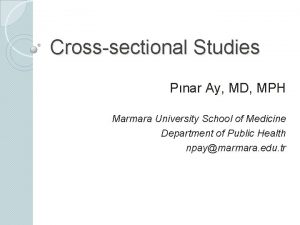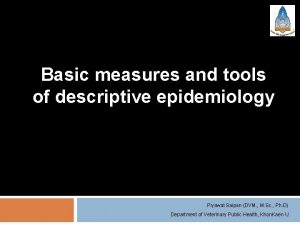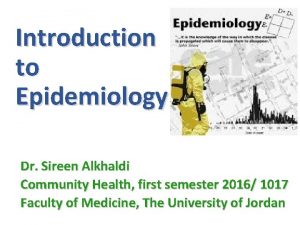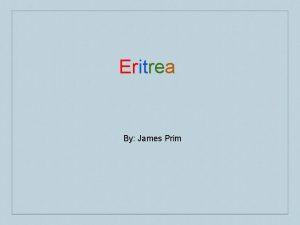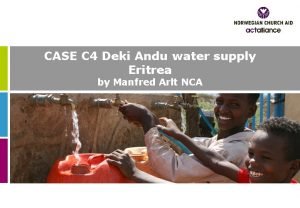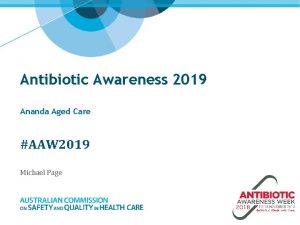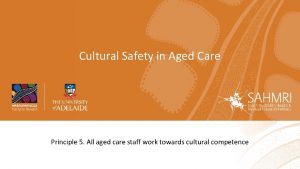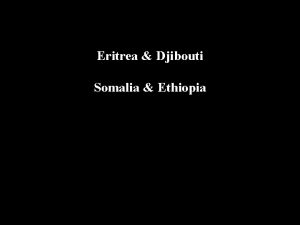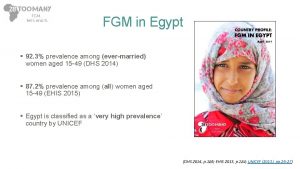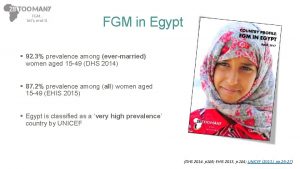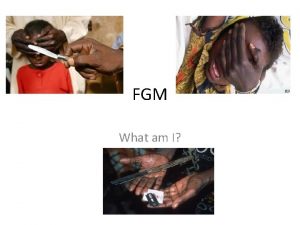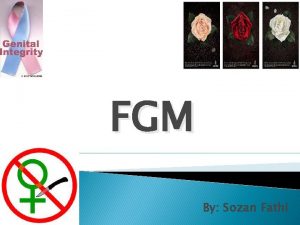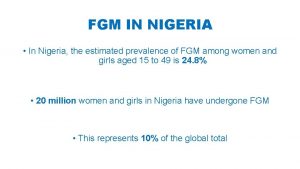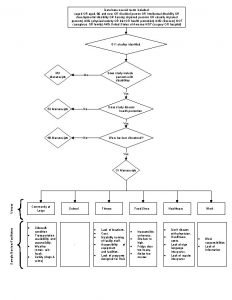FGM in Eritrea 83 prevalence among women aged












- Slides: 12

FGM in Eritrea § 83% prevalence among women aged 15 -49 in 2010 § Down from 88. 7% among women aged 15 -49 in 2002 § Based on the 2002 data, Eritrea was classified as a ‘very high prevalence’ country by UNICEF (EPHS 2010, p. 347; DHS 2002, p. 198; UNICEF 2013)

© 28 Too Many Where? Highest FGM prevalence: Four out of six of the administrative ‘zobas’ record a prevalence of over 90% Lowest FGM prevalence: Maekel (including the capital, Asmara) and Debub (EPHS 2010, p. 347)

Where? FGM Prevalence in Rural Areas: § 85% of women aged 15 -49 FGM Prevalence in Urban Areas: § 73. 6% of women aged 15 -49 in Asmara (the capital city) § 85. 4% of women aged 15 -49 years in other towns (EPHS 2010, p. 347)

Why? § Social acceptance – the main benefit according to 10. 1% of women aged 15 -49 who have heard of FGM (also cited by 5. 4% of men) § Preserves virginity/prevents pre-marital sex – the main benefit according to 7. 7% of men aged 15 -49 (also cited by 6. 3% of women) § Other perceived benefits include better cleanliness/hygiene and religious approval marriage prospects, (EPHS 2010, pp. 360 & 361)

Age & Type of FGM § FGM is usually performed in Eritrea during the first five years of a girl’s life § There is a general belief that ‘the younger a girl undergoes FGM, the more readily she will heal’ § Varies by place of residence – girls are usually cut at a younger age in Asmara (often at less than one year old) than in other areas § Only 2. 2% of girls have FGM in Asmara after the age of five, compared to 18. 8% in rural areas § All FGM Types are performed in Eritrea § Approximately one-third of Eritrean women have had Type III FGM (infibulation) (EPHS 2010, p. 350; Akinboyo & Negesh 2012)

Is FGM Declining in Eritrea? 100. 0% 93. 1% 93. 0% 90. 4% 90. 0% 88. 4% 84. 9% 79. 1% 80. 0% 68. 8% PREVALENCE OF FGM 70. 0% 60. 0% 50. 0% 40. 0% 30. 0% 20. 0% 10. 0% 45 -49 40 -44 35 -39 30 -34 AGE GROUP OF WOMEN 25 -29 20 -24 15 -19 (© 28 Too Many; EPHS 2010, p. 347)

Law § March 2007: The Female Circumcision Abolition Proclamation No. 158/2007 came into effect, outlawing FGM § It is a simple, five-clause law covering all types of FGM § Contravention of the law is punishable by imprisonment of two to three years or up to ten years if FGM results in death § The law also requires mandatory reporting of an intended event to perform FGM, punishable by a fine if someone fails to report it § Information on law enforcement in Eritrea is not available

Understanding & Attitudes The EPHS 2010 reports that 77. 2% of women and 83. 8% of men aged 15 -49 who have heard of FGM believe that it has no benefits for a girl § Although the majority of respondents see no benefits in FGM for a girl, very few women report having heard objections to their daughters undergoing it § Knowledge of FGM among women aged 15 -49 is almost universal (99. 2%) § 90. 9% of women and 83. 1% of men have heard of the law against FGM § 58. 9% of women reported that they knew of activities against FGM operating in their area § 60. 1% of female respondents who have heard of FGM believe that it is required by their religion; ‘religious approval’, however, is not commonly cited as a benefit of FGM for a girl (EPHS 2010. pp. 347, 351, 357, 360 & 361)

§ Public support for FGM has declined significantly in the last twenty years § The belief that FGM should not be continued is directly correlated with men and women’s levels of wealth and education PERCENTAGE OF MEN AND WOMEN IN SUPPORT OF FGM Support for FGM 60% 56. 8% 48. 8% 45. 6% Women Men 40% 30% 20% 12. 2% 10. 0% 0% 1995 2002 2010 YEAR Percentages of Eritrean men and women who support the continuation of FGM, by year (data for men not collected in 2002 ) (DHS 1995, p. 172; DHS 2002, p. 207; EPHS 2010, pp. 364 & 365)

Anti-FGM Campaigns § Since 2005 Eritrean law has restricted international NGOs from working in country § The only two registered NGOs active in relation to eliminating FGM are the National Union of Eritrean Women (NUEW) and the National Union of Eritrean Youth and Students (NUEYS) § The NUEW has set up anti-FGM committees across the six zobas to promote an anti -FGM strategy based on a holistic approach called Habarawi (meaning ‘collective’) § This approach includes all levels of society and is aimed at improving the health and well-being of Eritrean women by changing social norms, behaviour and attitudes § The NUEW has also been working in partnership with the UNFPA and UNICEF on the Joint Programme on FGM/C: Accelerating Change

Challenges Moving Forward ü Overcoming traditions, beliefs and social norms that support the continuation of FGM and override the law ü Tackling family and community pressures, particularly from grandmothers, that make it difficult for people who object to FGM to speak up ü Clarifying misunderstandings around sex and FGM through accurate sexual health education for both adolescents and adults ü The limited access to family planning, the high rate of home births and Eritrean’s reliance on traditional medical practitioners all increase the risks for women and girls ü Accessibility and limited funding for healthcare, especially for women in remote areas and those suffering with the consequences of fistulae ü The rate of illiteracy is high for women and can restrict the effectiveness and reach of anti. FGM campaigns

Challenges Moving Forward ü Implementation and enforcement of anti-FGM laws remains difficult as the constitution and the 2015 Codes have not been fully implemented ü Government policy expelling NGOs and INGOs and restricting foreign funding curtails the amount of FGM research that can be done and prevents independent verification of existing data and the sharing of knowledge and best practice to tailor and scale up vital programmes ü Lack of press freedom limits debates and the sharing of knowledge and strengthens taboos ü Obtaining comprehensive and reliable data on FGM in Eritrea is not possible under these current circumstances ü Transport and infrastructure in remote rural areas, where FGM prevalence is often highest, present difficulties in terms of access, making scaling up programmes and prosecuting perpetrators challenging
 Period prevalence vs point prevalence
Period prevalence vs point prevalence Period prevalence vs point prevalence
Period prevalence vs point prevalence Period prevalence vs point prevalence
Period prevalence vs point prevalence Defination of proportion
Defination of proportion Religion in eritrea
Religion in eritrea Deki andu eritrea
Deki andu eritrea The great gatsby eyes billboard
The great gatsby eyes billboard What is cultural safety in aged care
What is cultural safety in aged care Sarah russell aged care
Sarah russell aged care What is dignity of risk
What is dignity of risk Ananda aged care
Ananda aged care Open disclosure in aged care
Open disclosure in aged care 5 principles of cultural safety australia
5 principles of cultural safety australia
